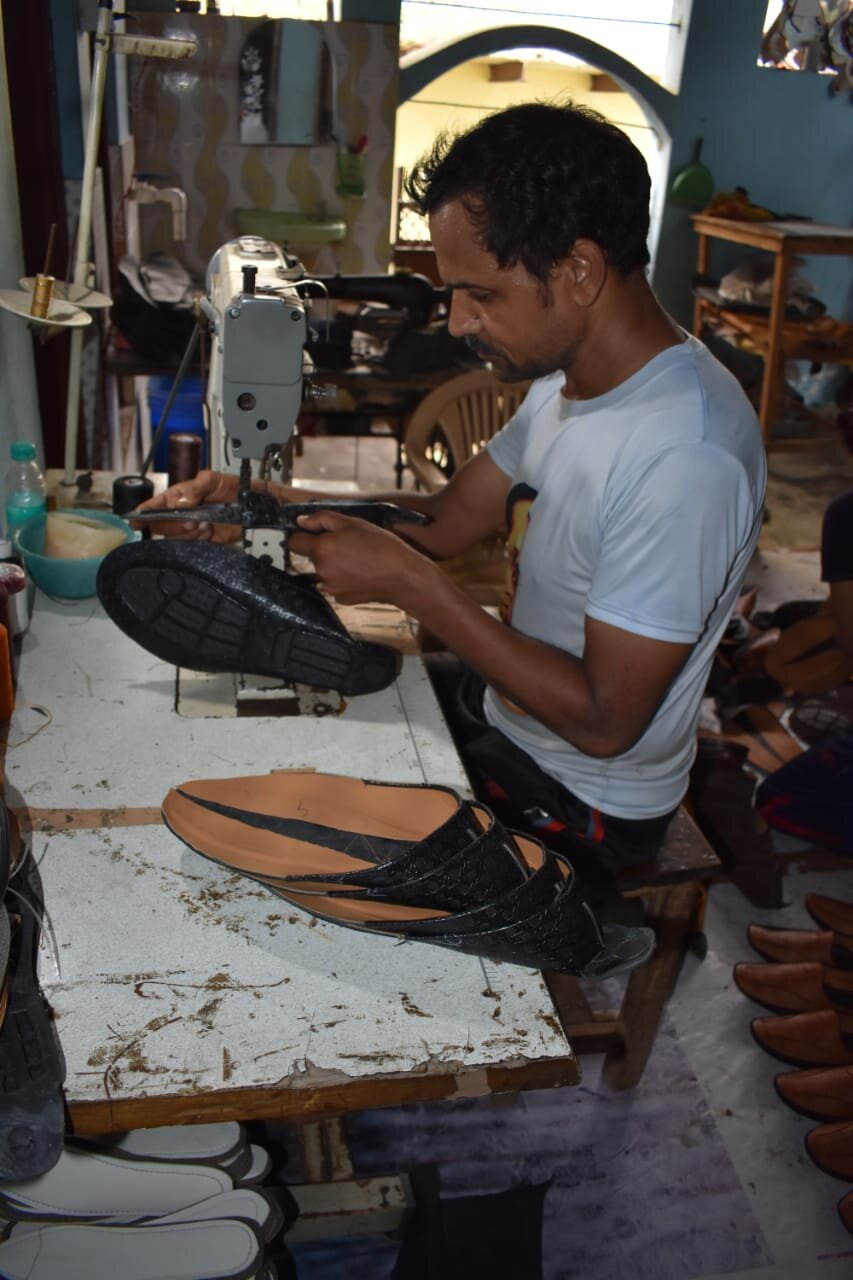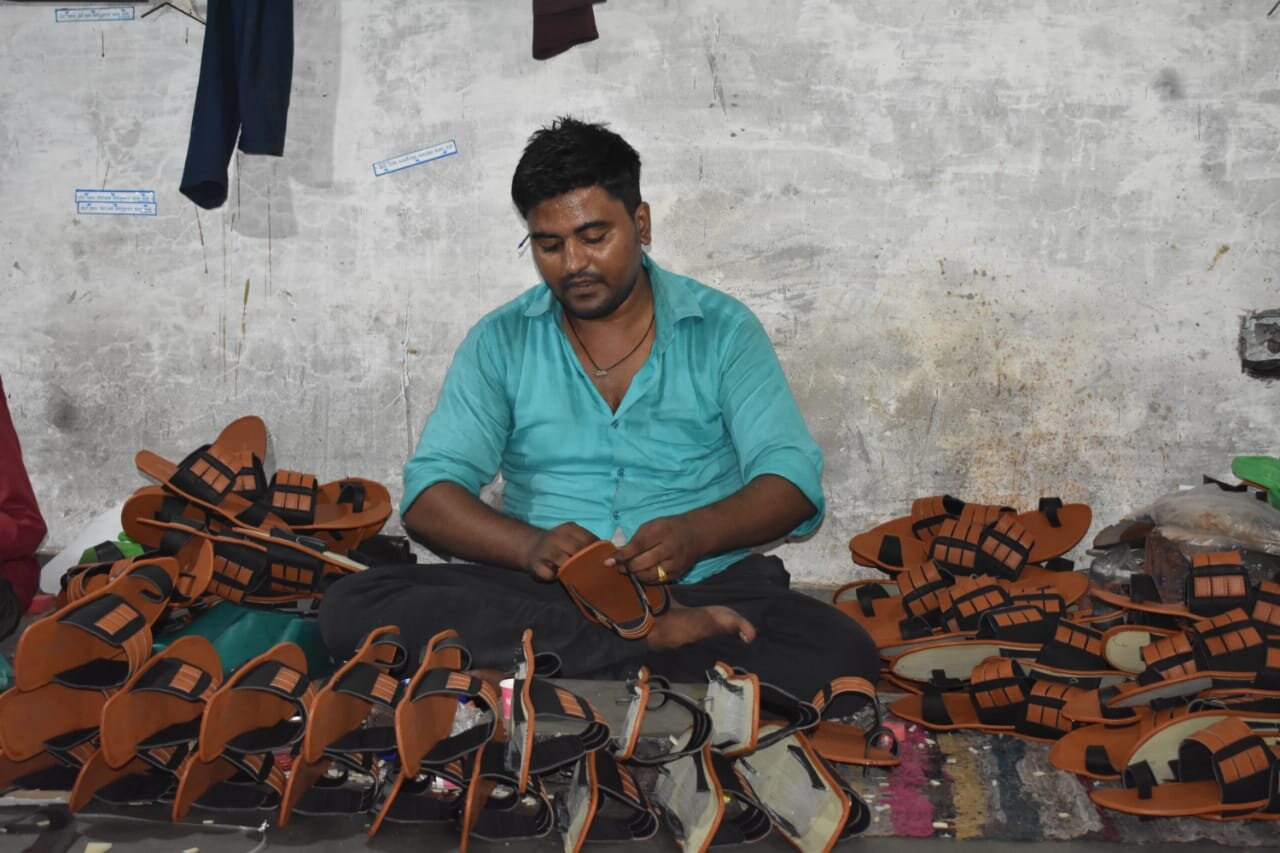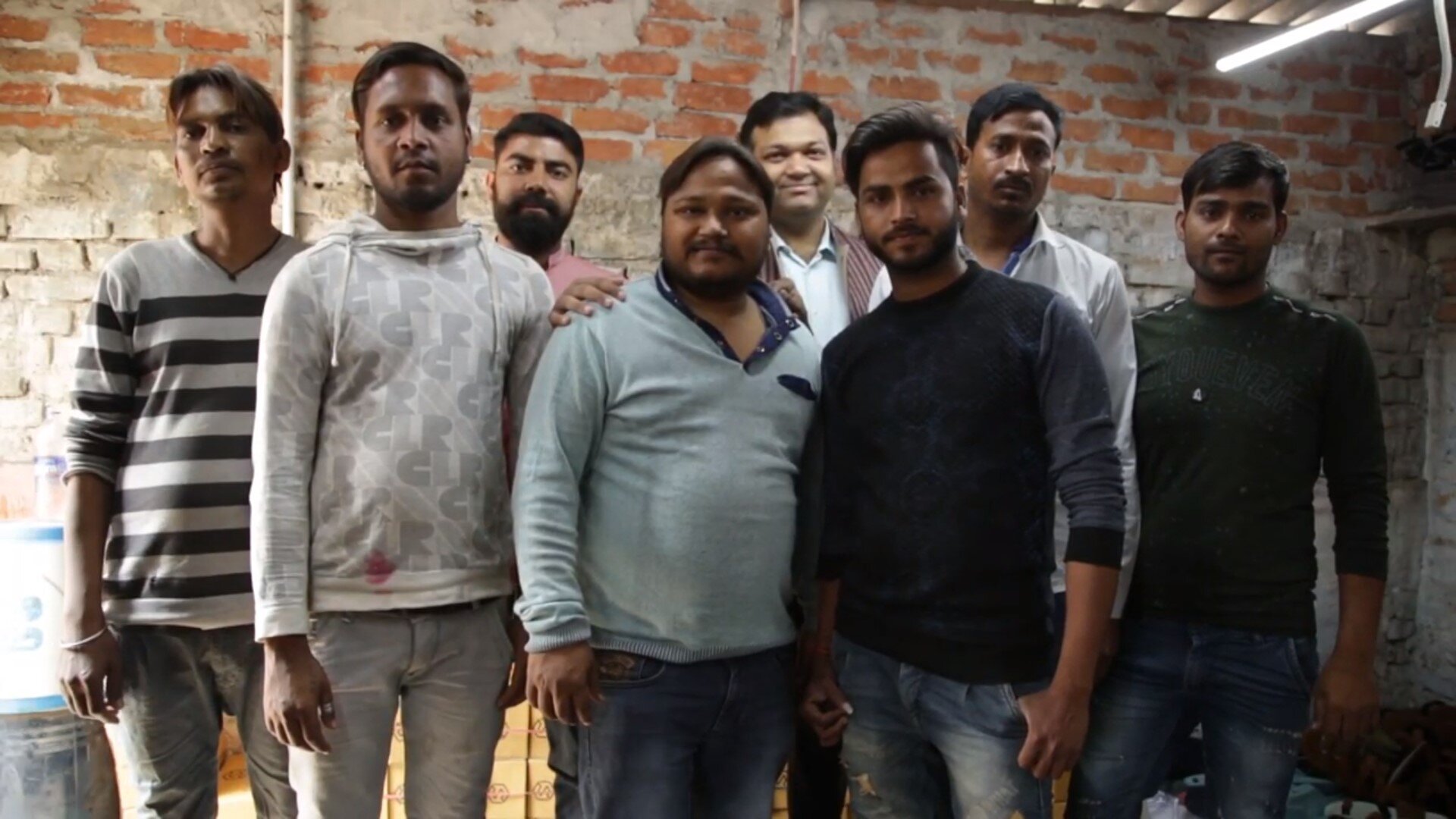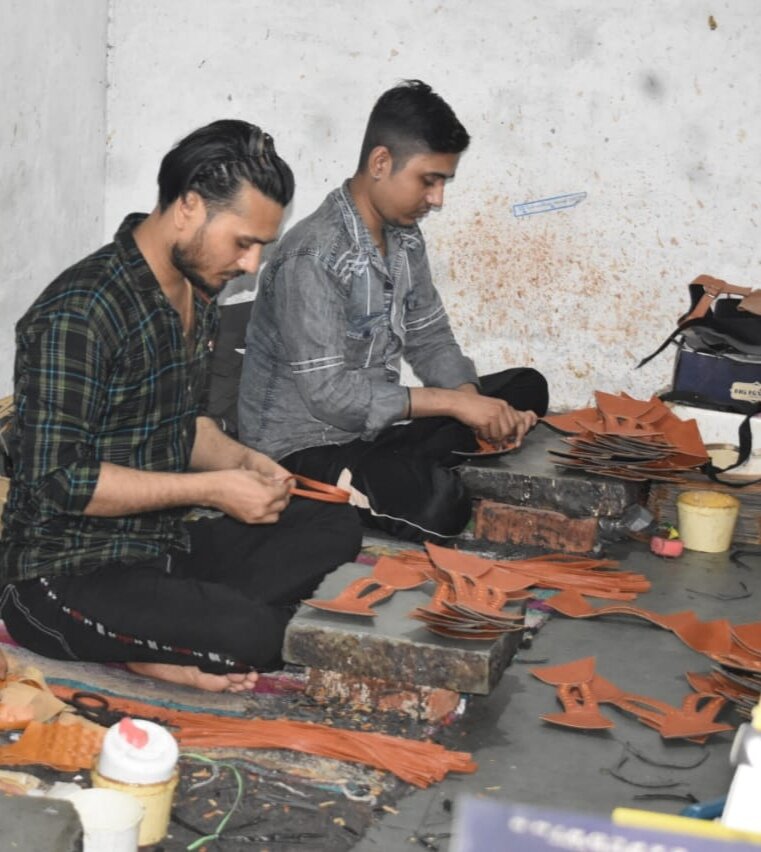Ankit Kumar, Co-Founder of Shoegaro
The city of Agra in Uttar Pradesh, India has long been known for the handmade shoes produced by the artisans who live there. However, the number of artisan clusters making handmade footwear in Agra has drastically declined from 20,000 clusters in 2000 to just 5,000 by 2012. Shoegaro, an Agra-based social business aims to preserve the traditional art of shoemaking and create income opportunities for the artisan families who have carried this cherished skill through the generations.
Shoegaro was founded by a team of dedicated entrepreneurs: Ankit Kumar, Gagan Mukhi, and Dr. Hifza Afaq. Their vision is simple – “make comfortable and affordable handcrafted shoes for every occasion accessible to every footwear consumer of India.” But core to their business are the artisans they’re working to empower with dignified livelihoods.
Shoegaro is one of the early-stage businesses participating in Upaya’s 2020 Accelerator Program. Through virtual workshops and sessions with the entrepreneurs, we’ve learned a lot about their business, and we’re inspired by their drive to preserve this cherished art by creating jobs for the artisans. We asked Ankit Kumar to dig a little deeper into the founding of Shoegaro and what he and his co-founders have learned so far.
Q: What are the key problems your company aims to address?
“We are based at Agra which is also famous for its traditional handmade footwear manufacturing art. Shoe making is four centuries old art and is closely associated with heritage and culture of Agra. This traditional art of handmade shoe making has been passed on to artisans from generations after generations. In last two decades, the artisans have been losing their shoe making jobs to rapid industrialization in shoe market. And because of which, most of these artisans have been living in abject poverty and working as daily wage laborers in and around Agra city or have migrated to other parts of India in search of livelihood. We are trying to preserve the dying art of handmade shoemaking, with aim to engage artisan families by providing a platform to connect artisans making handmade shoes with demand centers across India.”
Q: How did you become so passionate about this problem?
“While working as an ecommerce consultant to various domestic footwear brands manufactured in Agra me and my co-founders met various handmade shoe making artisans working as laborers in these factories. I came to know that many of the laborers working in these factories previously had their own small units where their families used to make handmade shoes, but due to rapid industrialization and change in market dynamics, they started losing their clients and business to rapidly growing mass manufacturing units in Agra.
When we further researched this problem, we found out that the footwear manufactured by these artisans in their home units is equally good in quality and is of competitive price. The major reasons which drove them out of their profession was the disconnect from the modern market dynamics and lack of advanced training in footwear technology and access to markets.”
Q: What inspired you to start your company?
“I already have an experience in online selling, and my other co-founders have experience in footwear manufacturing and AI based systems. We are based at the hub of footwear manufacturing where there are a huge number of trained footwear artisans without work, and the footwear market is still under-fulfilled in India and has huge potential for growth as per capita consumption of footwear in India is 1.7 where as global per capita average is 3. So we found that resolution to these social concerns of artisans are linked with encouraging data set which prompted us to start our business, Shoegaro, a social footwear business.”
Q: What has been your greatest accomplishment to date?
“I feel that Shoegaro’s greatest accomplishment is still to come. But if I look backwards, I have felt proud of our continual growth and yearly sales numbers. It’s not related to money we earned or generated in this huge market--we are not competing with anyone. But we are defeating our pervious performance every year. It is the reflection of our hard work we put in building our company from zero. It is the hard work of all the artisans who have aligned their thoughts and work with our organizational goals and contributed towards our growth and their growth both financially and intellectually.
One more accomplishment is worth remembering here. It was when first batch of our 47 artisans became totally independent of us, and two artisans moved towards becoming micro-entrepreneurs. This was a moment when we realized how we are making change in the lives of jobless artisans and bringing change and dignity to the lives of the families of all these artisans.”
Q: What has been your biggest learnings till date?
“From my earlier experience in the footwear industry, I realized that the companies who had limited growth were either constrained by heavy organization structure (negative cash flows or burn rate more than revenues/receivables) or were too lean to add capacity to scale. These learnings led us to create a structure which is scalable by breaking our whole manufacturing system into small, independent, autonomous units which are responsible for their own growth and quality of work they produce.
These household-based artisan units can be attached or detached depending upon the demand for footwear. So creating an organization of modular decentralized footwear units, each led by a micro entrepreneur is the biggest learning I had, and because of which, we are able to manage any upward or downward change in production without incurring any additional costs. These micro entrepreneurs, after a brief period of six to eight months, can function independently and becomes not only capable of planning their order cycle but also explore more work for their team.”
Q: What have been your biggest challenges so far?
“One of the biggest challenges is access to finance for these artisans. No artisan in the past has received credit from a formal lending institution. Financial inclusion could put more working capital in their hands which will accelerate their growth out of poverty.
Another significant challenge is the pessimism of the new generation of artisans towards their ancestral art. I must say that it is not their fault because they have grown up seeing their parents not able to meet the needs of the family from the earnings they have by making handmade shoes. Now it is very difficult for anyone to make them understand that, by implementing their new ideas and technology-driven approach, they can get huge success in this segment. While some are convinced, most youth have not yet bought in to this profession.
I recall an incident when, with due permission, we uploaded an image of an artisan working in his unit with his son. We received a call from this artisan requesting us to remove this image as his son did not want to tell his friends that he is involved in shoe making. They have lost pride in this ancestral art, and a lot of work needs to be done to make them realize its potential.
So, in summary, we are yet to demonstrate a business case for brand building to shoe artisans.”
Q: What has been your experience in working with the jobholders and their community?
“When I started working with these artisans, I was astonished by the skill they have in stitching and turning the pieces of leather or fabric or even PU into a beautiful footwear within few hours. They have tremendous understanding of the very basics of footwear which is difficult to find even in a trained professional, and all this they learned from their ancestors and ustaads (artisan cluster teachers). The main challenges faced by artisans these days are creating new designs suitable to the present day lifestyle and financial limitations to pull off bulk orders.
When we helped them adopt new techniques and effective use of internet to get the sense and feel of new designs, the results were fantastic. The artisans got much more involved in their work. They were refreshed by realizing that they can also make new trendy designs as per the needs of young generation and can compete with big brands. Slowly and gradually we saw a shift in designing patterns of these artisans, and linked with that came the prosperity and growth for many artisans who adopted to the change. But because of lack of working capital facilities for these artisans, their raw material procurement capabilities are mostly limited which also plays a major role in hindering their growth.”
Q: Is there a story of a jobholder that stands out?
“It’s was a really proud moment for us when the first artisan with whom we started business was able to save enough money to register to go for Haj to Mecca with his wife this year. He was really happy to achieve this as quite a few times while our interaction he told us that it is his dream to go for Haj he is saving money for that. We are business men, but it feels really good when with earning money some good is also being spread in the society. His income grew three to four times with in three years. He was able to buy a new two-wheeler, got his house repaired, and uplifted his social stature in his community which also motivated other jobless artisans to again pursue their shoe making careers.”
Q: What is your vision for your company?
“Our vision is to make comfortable and affordable handcrafted shoes for every occasion accessible to every footwear consumer of India. We are progressing to achieve this by empowering marginalized communities of handmade footwear artisans and using recyclable materials into crafting of footwear.
We believe growth of low-income footwear artisans while reducing footwear waste by recycling is key to sustainable footwear business development.”
Q: What would be your advice to other entrepreneurs just starting out?
“There are lots and lots of opportunities around us in our society, and India is the rich land of art and culture from which we can reap benefits. So always try to harness the power of a network of people working independently towards the common goal. You need to show respect to these artisans and their art and empower them with knowledge, and if you are ready to share your piece of success with these artisans, they will take you to the ever greatest heights of your business.
Also look at the barriers limiting growth in your industry, and ask yourself if the solution you are proposing is solving any of these problems and if your target customers will be willing to pay for your product or services!”


















The Tribal Hermit is a social impact venture that works closely with 130+ Dhokra craft artisans from Kondagaon, Bastar, and Raigarh districts of Chhattisgarh to design, create, and sell their products.